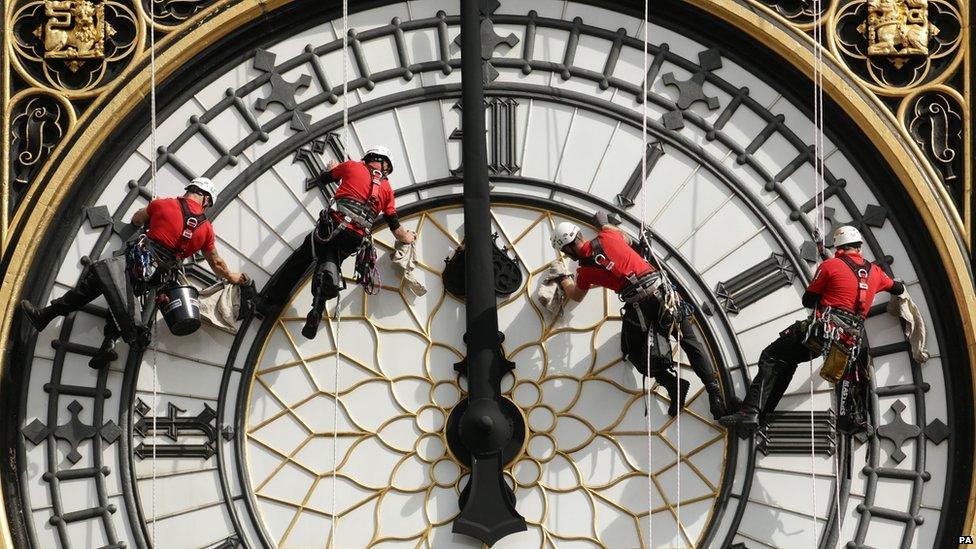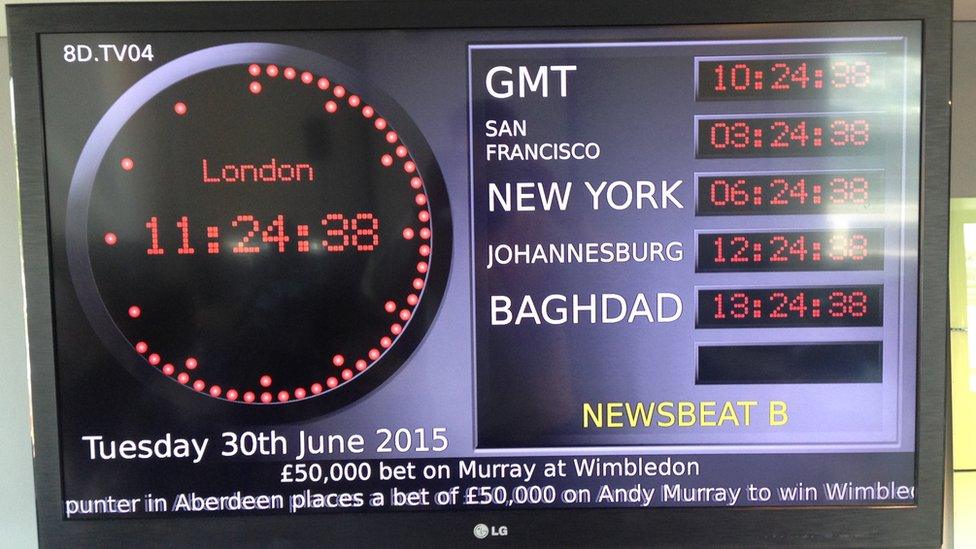The leap second explained
- Published

It's only a second but it could cause big problems.
At midnight an extra second will be added to our clocks to make sure we keep in time with the speed at which Earth spins - a bit like a leap year, just much shorter.
There's a slight difference between how fast our planet spins and official world time, so this extra second helps bridge the gap.
However, there's a warning that not everyone is ready for the shift.
Atomic clock expert Professor Judah Levine, from the US National Institute of Standards and Technology, warns that "it's a major interruption mostly because there are a lot of systems that aren't prepared to handle the leap second correctly".
Last time we added a second Professor Levine was proved right.
In 2012 a number of big websites including Mozilla, Reddit, Gawker, LinkedIn, FourSquare and Yelp were caught out.
And in Australia more than 400 Quantas flights were delayed as staff were forced to switch to manual check-ins.
This time around there are some concerns that stock exchanges and financial markets could be affected.
One senior broker said that this is because "these days, in the electronic world, one second is not an insignificant amount of time. It's worth being diligent about it."
But he did point out that "no one's actually expecting a big impact".
You may not even see anything changing if you stay and watch your clock at midnight.
An expert told Newsbeat that most domestic digital clocks set by radio time signals don't show seconds, so you probably wouldn't notice that the last minute was a second longer.
If you're lucky enough to have a digital clock showing Universal Coordinated Time, when the leap second is added you would see 23:59:60 for one second, as the last "minute" would contain one second more.

A clock at Newsbeat HQ
But what exactly is happening and why?
Newsbeat got in touch with Robert Edwards, head of science at the Royal Observatory Greenwich, the place were time in the UK is officially set.
In short he's a man who knows his minutes from his seconds (and leap seconds). This is what he told us.
Why bother?
The practice of adding leap seconds has been going on since 1972.
Leap seconds account for the fact that over time, perfectly normal irregularities in the Earth's rotation cause the time according to the Sun and the time according to our atomic clocks to drift apart.
The leap second ensures that they stay in line with each other.
It's only a second, can't we just ignore it?
You could ignore this over a short timescale.
After a century the time given by our atomic clocks might disagree with the time given by the Sun by about one minute.
After 6,000 years they might disagree by an hour.
After roughly 72,000 years they might disagree by 12 hours and midday according to our atomic clocks would take place at midnight according to the Sun.
Our timekeeping system is based on the average length of the day, which actually varies by 21 to 29 seconds in either direction throughout the year.
Over the course of the year our clocks can disagree with the Sun by as much as 15 minutes and nobody notices.
Follow @BBCNewsbeat, external on Twitter, BBCNewsbeat, external on Instagram, Radio1Newsbeat, external on YouTube and you can now follow BBC_Newsbeat on Snapchat